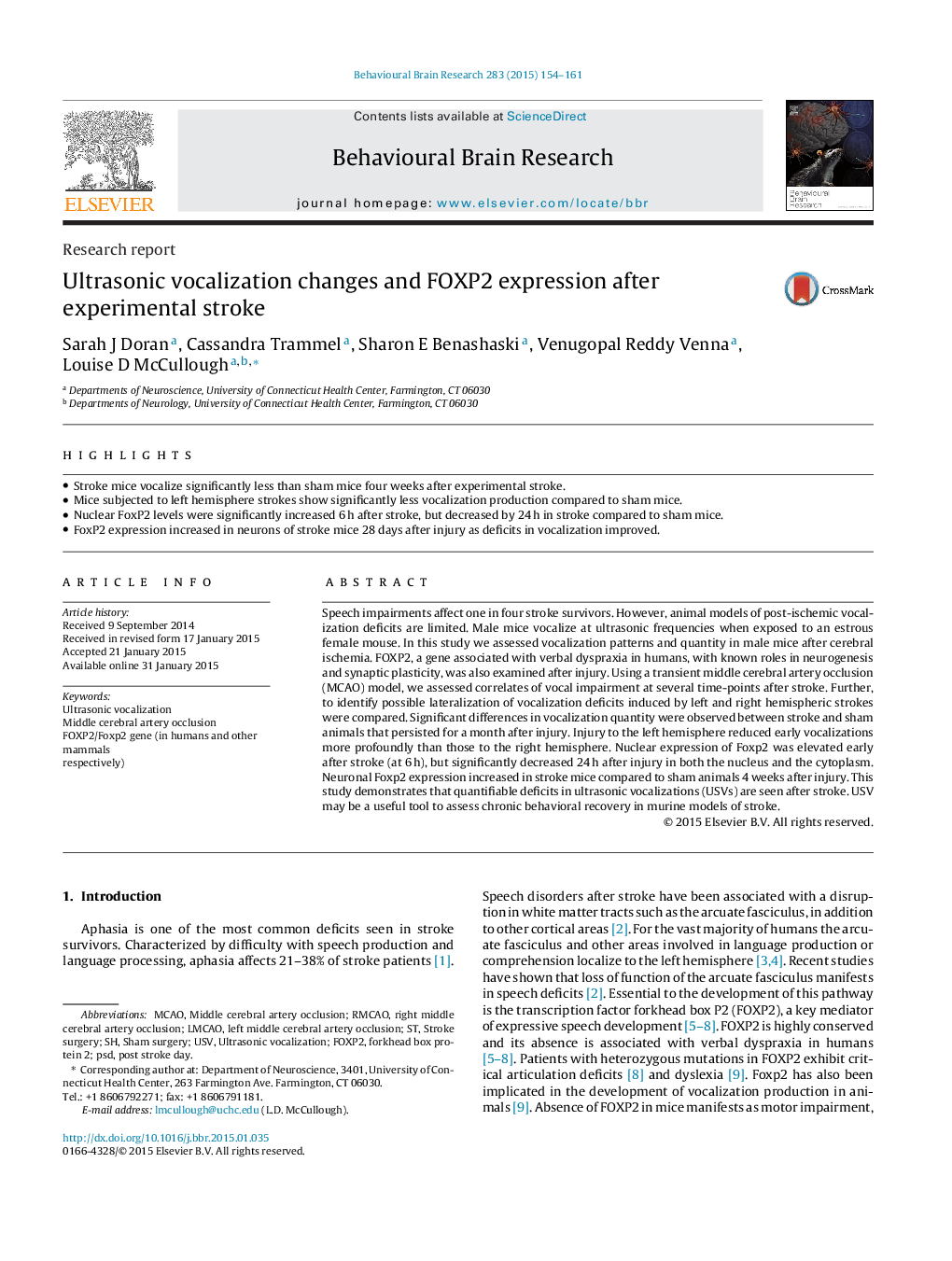| کد مقاله | کد نشریه | سال انتشار | مقاله انگلیسی | نسخه تمام متن |
|---|---|---|---|---|
| 4312483 | 1612949 | 2015 | 8 صفحه PDF | دانلود رایگان |

• Stroke mice vocalize significantly less than sham mice four weeks after experimental stroke.
• Mice subjected to left hemisphere strokes show significantly less vocalization production compared to sham mice.
• Nuclear FoxP2 levels were significantly increased 6 h after stroke, but decreased by 24 h in stroke compared to sham mice.
• FoxP2 expression increased in neurons of stroke mice 28 days after injury as deficits in vocalization improved.
Speech impairments affect one in four stroke survivors. However, animal models of post-ischemic vocalization deficits are limited. Male mice vocalize at ultrasonic frequencies when exposed to an estrous female mouse. In this study we assessed vocalization patterns and quantity in male mice after cerebral ischemia. FOXP2, a gene associated with verbal dyspraxia in humans, with known roles in neurogenesis and synaptic plasticity, was also examined after injury. Using a transient middle cerebral artery occlusion (MCAO) model, we assessed correlates of vocal impairment at several time-points after stroke. Further, to identify possible lateralization of vocalization deficits induced by left and right hemispheric strokes were compared. Significant differences in vocalization quantity were observed between stroke and sham animals that persisted for a month after injury. Injury to the left hemisphere reduced early vocalizations more profoundly than those to the right hemisphere. Nuclear expression of Foxp2 was elevated early after stroke (at 6 h), but significantly decreased 24 h after injury in both the nucleus and the cytoplasm. Neuronal Foxp2 expression increased in stroke mice compared to sham animals 4 weeks after injury. This study demonstrates that quantifiable deficits in ultrasonic vocalizations (USVs) are seen after stroke. USV may be a useful tool to assess chronic behavioral recovery in murine models of stroke.
Journal: Behavioural Brain Research - Volume 283, 15 April 2015, Pages 154–161